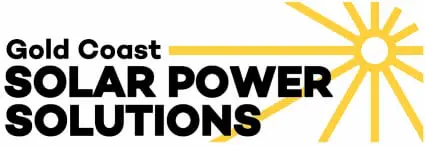So what’s all the fuss with solar power gross or net feed-in tariffs? Here in Australia and especially on the Gold Coast we are perfectly situated to take full advantage of the power constantly being produced by the sun. Solar power systems are connected to your property switchboard and then to the electricity grid through an electricity meter to allow feed-in of solar power to the power grid. This is done through one of two types of solar power feed-in tariffs – a gross feed-in tariff or a net feed-in tariff.
Solar Power Gross Feed-in Tariffs
Solar power gross feed-in tariffs work by connecting a solar power system in such a way that all the solar power that you produce is fed through an electricity meter BEFORE any of that solar power is consumed inside the house. From there the solar power produced can either be fed back into your property to power any loads which are consuming power at the time or it will be fed back into the power grid to be used somewhere down the street. In Queensland a gross feed-in tariff is available but I would not recommend it as your electricity retailers will only pay a very low rate for your solar power: whilst they will very happily charge you a much larger rate for power that you consume! NSW did have a gross solar power feed-in tariff in place of 60c per kWh – this was an amazing offer but was not sustainable, the NSW government has since dropped its feed-in tariff altogether.
Solar Power Net Feed-in Tariffs
Solar power net feed-in tariffs work by connecting your solar power system in such a way that the power that you produce feeds straight into your switchboard and to any loads that you have in use at the time. This is great as it means instead of taking power from the street during the day your power comes from your solar panels first, then if you require any extra power you just take that from the street as normal. If you are in a situation where you are producing more solar power than you are using at any given time then this surplus solar power will be sent back through your electricity meter and out to the power grid. This surplus power is your “net feed-in” solar power. Queensland electricity retailers used to pay 44c per kWh for your net feed-in tariff, however that has now dropped down to 8c per kWh and from the 30th July 2014 it will drop down to zero cents, however, selected electricity retailers will pay a net solar feed-in tariff out of their own pockets.
With the current low rate being paid for any surplus solar power on a net feed-in tariff of 8c per kWh by Queensland electricity retailers you are best to try and size a solar power system around your daytime power consumption. For tips on how to make a solar power feed-in tariff work for you please click on the following links.
Making the most of the 8c solar power net feed in tariff
What size solar power system is best for you?

Hi Mark, the best thing to do would be contact your local power provider with your NMI number, they should have records of how your system is setup. Thanks
How can I tell if I am on a gross or net feed in tariff? It doesn’t say anything about gross or net on my AGL bill. I bought the house in 2017 with an existing solar system.
It is a nice thought to be totally independant from the grid, but the reality is it is a very un-economical option if the gird is available to you. This is due to the fact that large battery banks as required in stand alone systems cost thousands of dollars, and only have a life span of 10 to 15 years.
Grid connect solar power is the best of both worlds – solar power used during the day with any excess power fed to the grid – and at 44c per kWh, which you just buy back again at a standard tariff rate after dark!
Even though the energy retailer is only gives the same rate as what they charge, I’m not sure that it’s a pointless exercise. It may be better than the upfront and ongoing costs of batteries and associated equipment to store power for night-time use. You don’t need batteries if you’re grid connected. ALthough, I’m not sure what the grid connection costs are. ALthough, it would be satisfying to go off grid completely (with batts for nighttime) and then you wouldn’t have to pay their meterman, activation fees, billing charges and all that crap.
Have a generator or some source of power for backup in case you get no sun for ages. Shit-fed TEG? :) I like how you can make money buy returning excess under the home solar arrangement thingo if you’re in the right state.